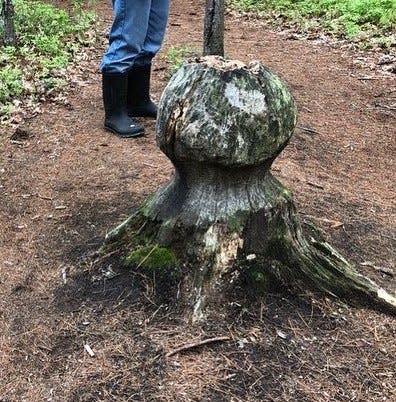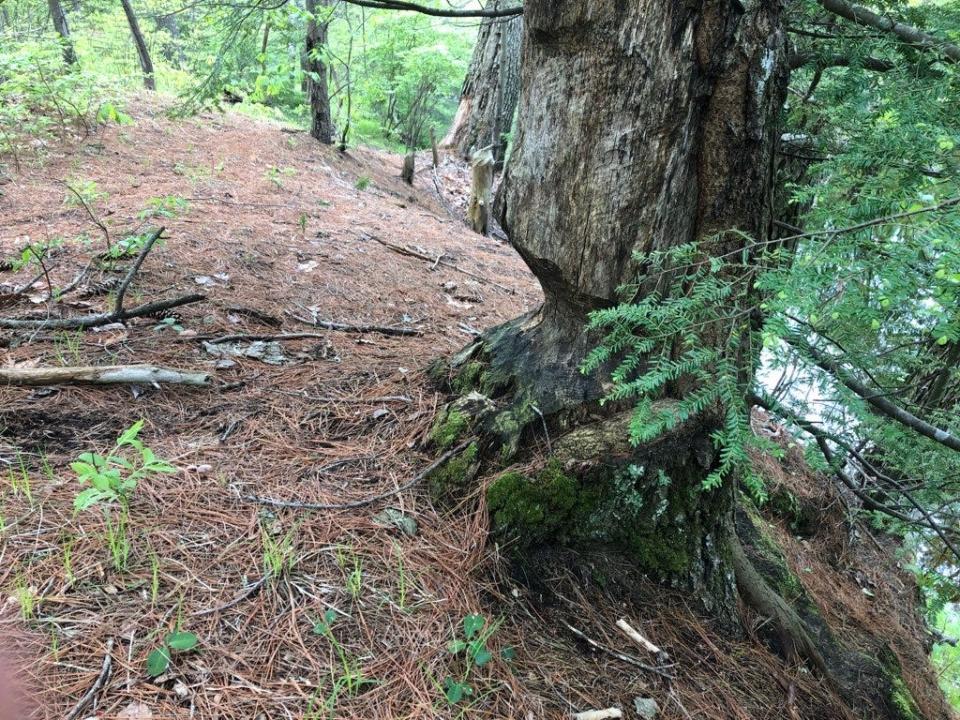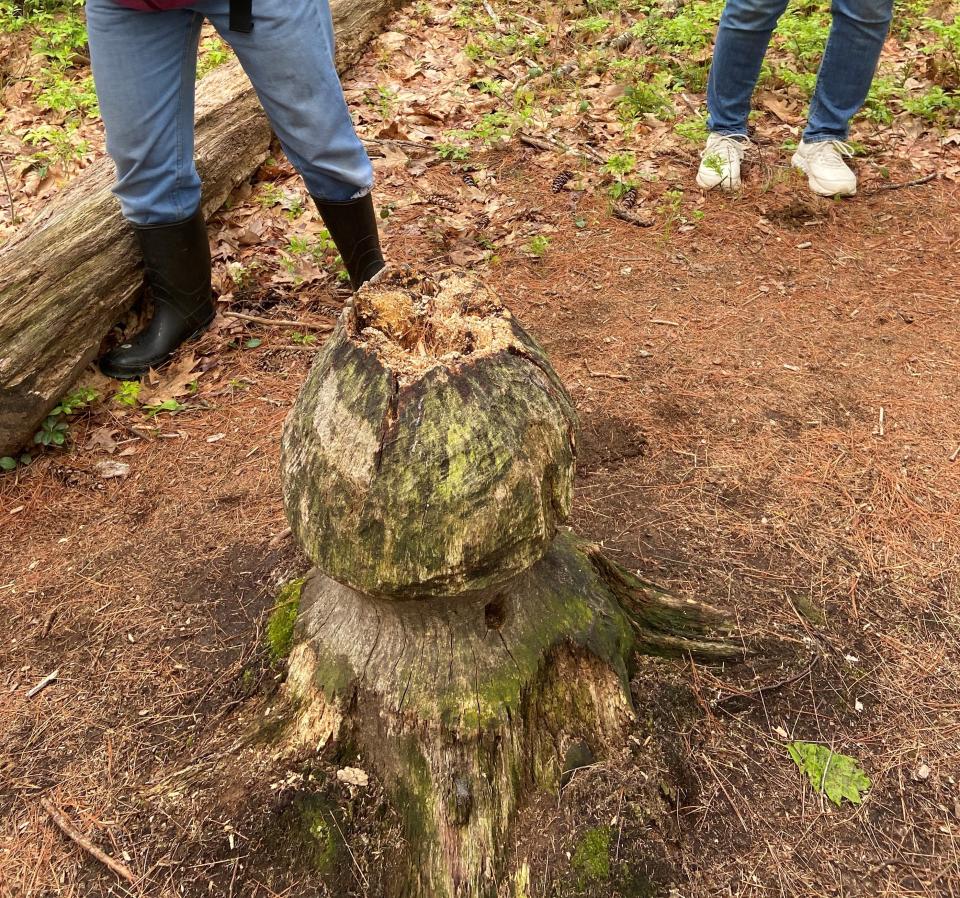Beavers' talented tree work can be found along many Seacoast streams
I got to do one of my favorite things this weekend: Get outside with other people who are curious about nature, knowledgeable and like being outside.
In this case, it was a stream exploration with the Great Works Regional Land Trust at Keay Brook Preserve in Berwick, Maine. Along with the wide variety of smaller critters we found in the stream was a glimpse of a beaver swimming away and disappearing into a hole in the stream bank - a bank beaver!
Not all beavers make traditional lodges. As you might expect, when walking along a streamside trail, we also found plenty of evidence of beavers. Tracks in the mud with a wide tail drag, trees partially chewed through and trees stumps with those characteristic beaver gnaw marks. Our favorite was a tree stump someone called a bowling ball tree - a stump that had been partially chewed at the base and then topped off a bowling ball's width above the original chew line carved into a round ball, like a bowling ball, hence the name.

So, we got to speculating about how this had happened. The top of the bowling ball was fairly far up (two feet or so) - so we thought perhaps the beaver had started chewing down low then restarted higher up in winter when there was some snow on the ground. But given that beavers can reach three feet in length perhaps this was an easy reach regardless of snow?
I’m not sure that we will ever know the answer to this mystery, but we had some more easily answered questions. How long does it take a beaver to fell a tree? Do they control the direction the tree falls? Do they ever get hurt by falling trees?

The phrase “busy as a beaver” isn’t based on whimsy. Beavers really are busy. According to the Adirondack Ecological Center, one beaver can topple a 5-1/2-inch tree in just minutes. Larger trees, like the one- to two-foot in diameter trees we saw on our walk might take weeks. Alexander V. Badyaev conducted a 10-year study of beaver tree-felling, with the aim of finding out whether beavers intentionally fell trees in a preferred direction. It looks like they can and do. To control the direction a tree falls involves making at least two cuts in the tree, on opposite sides, with one above the other. If a beaver were to chew just one side of a tree, it could fall in almost any direction. However, in general, it seems that beavers want trees to fall towards their ponds. They are usually after the leaves and bark of those upper branches that they can’t reach from the ground. They appear to know that if they make their first cut on the uphill side of the tree (or the one away from the water) and then make a second cut below the first on the opposite side of the tree their tree will fall toward the water.
This study also helped answer our last question: How risky is this tree-cutting business for the beaver? Researchers found that beavers don’t often get crushed by falling trees, instead they are more likely to succumb to a tree collapsing downward during the cutting and gnawing process. But, beavers appear to cut trees in ways that minimize risk. According to Badyaev (National Wildlife Federation, July 2015), “Large trees with deep, even circular cuts become unstable and sometimes cause the tree to collapse, crushing the beaver’s head. But a cut above or below the initial deep opening prevents this problem, speeds up the work and produces a directional tree fall.”

Beavers don’t always finish the job. We found a couple large trees partially chewed through, but then evidently abandoned. Beavers have fast-growing teeth, they need to gnaw on things to keep their teeth a reasonable length and also to sharpen them. Their teeth are self-sharpening. They have a strong coat of enamel on the front of their teeth (not the back) so when they chew the back of the tooth is worn down more quickly than the front, resulting in a sharp, chisel-shape to the tooth. Very effective!! It is also believed that beavers will girdle a tree, killing it, and leaving it for the wind to blow over. They do this with trees they want to eat or build with and also perhaps just to open up the forest canopy, encouraging young, tasty trees to flourish. Our bowling ball stump had this sort of cut so perhaps this was the aim of that beaver?
While I may never solve the mystery of the “bowling ball” tree, this walk reminded me of how much there is to see out there in the woods. Beavers are becoming more and more common around here. They are both crepuscular (active at dawn and dusk) and nocturnal (active at night). So your best chance of seeing one is an evening stroll or kayak along one of our many local streams or rivers. Listen for the slap of their tails on the water. And even if you never see one, a partially chewed tree will give you a glimpse into their busy lives.

Susan Pike, a researcher and an environmental sciences and biology teacher at Dover High School, welcomes your ideas for future column topics. She is looking for readers to send her the signs of spring they're noticing so she can document them on her website pikes-hikes.com. Send your photos and observations to spike3116@gmail.com. Read more of her Nature News columns online at Seacoastonline.com and pikes-hikes.com, and follow her on Instagram @pikeshikes.
.
This article originally appeared on Portsmouth Herald: Nature News: Beavers are talented in tree work along Seacoast streams

